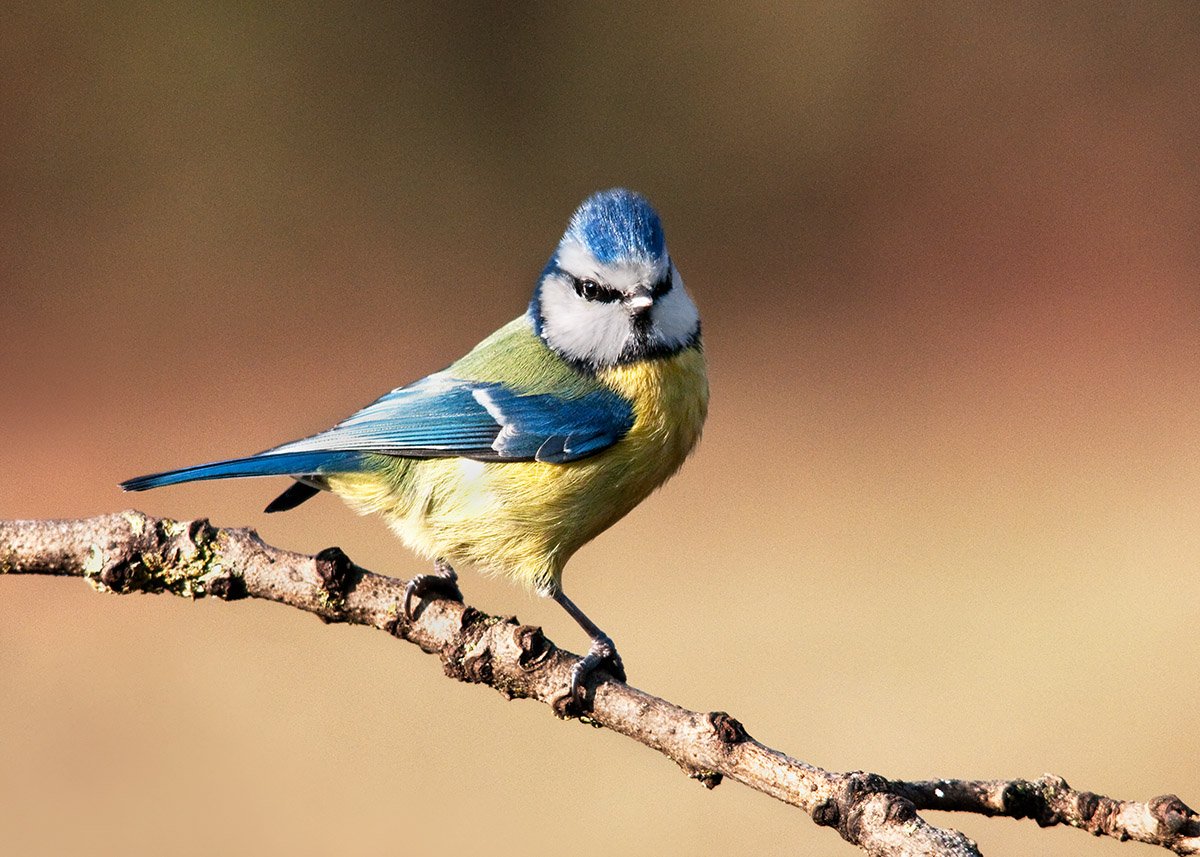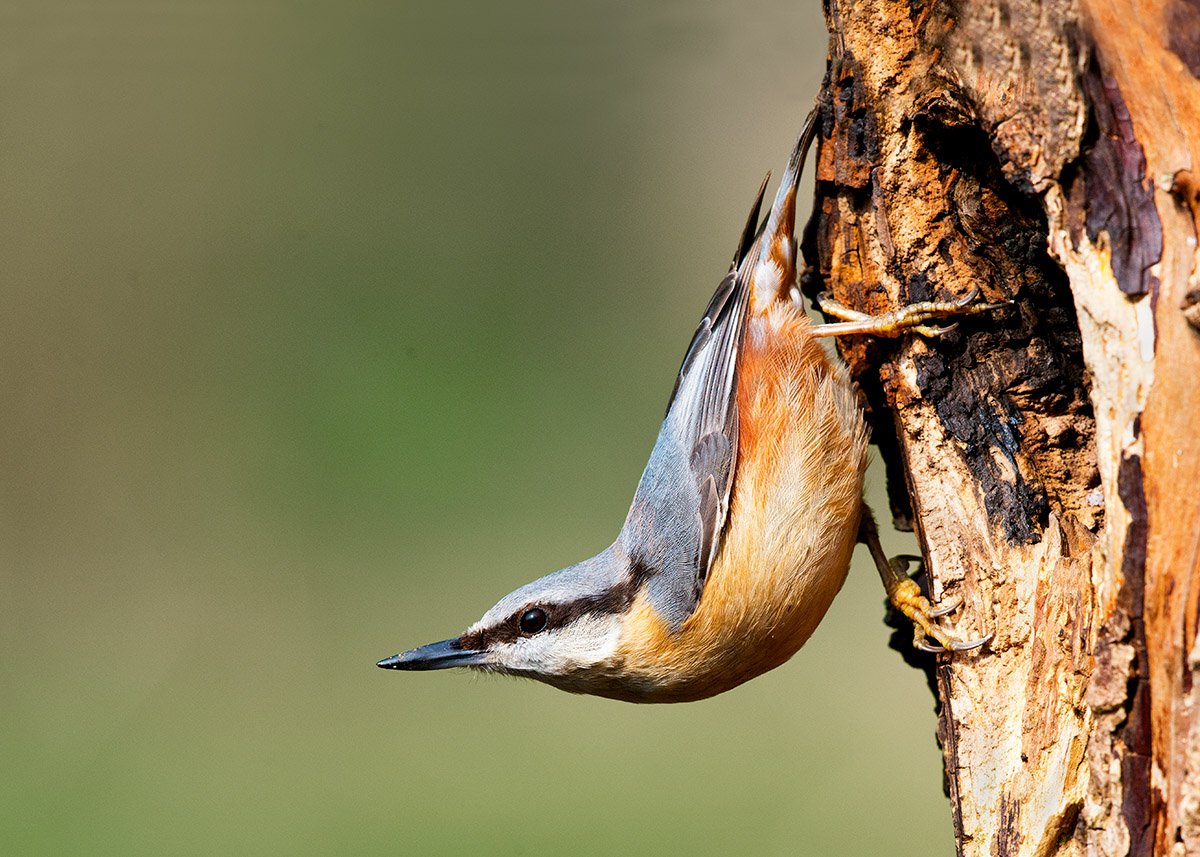 Image 1 of
Image 1 of


Blue Tit
The charming blue tit, with its vibrant colours and lively demeanour, is a familiar sight in gardens and woodlands across Europe. Here's an insight into this delightful bird:
Appearance: The blue tit is a small songbird with bright blue and yellow plumage. Its distinctive markings include a blue crown, wings, and tail, a yellow breast, and white cheeks with a black eye stripe. These bold colours make it easily recognizable.
Habitat: Blue tits are adaptable birds found in a variety of habitats, including woodlands, parks, gardens, and orchards. They prefer areas with trees or shrubs for nesting and foraging but are also known to visit bird feeders in urban and suburban areas.
Behaviour: Agile and acrobatic, blue tits are often seen hopping from branch to branch or hanging upside down while foraging for insects, seeds, and berries. They have a varied diet and are known to supplement their insect diet with seeds, nuts, and suet from bird feeders, especially during the winter months.
Breeding: Blue tits are cavity nesters and will readily use nest boxes provided by humans. They build intricate nests from moss, feathers, and other materials, often lining them with soft materials such as fur or wool. Breeding pairs may raise multiple broods in a single season.
Voice: Blue tits have a wide range of vocalizations, including melodious songs and a variety of calls. Their songs are often a cheerful series of trills and chirps, while their calls can vary from sharp "tsee-tsee-tsee" alarms to softer "chick-a-dee-dee-dee" calls.
Conservation: Blue tits are common and widespread throughout their range but may face threats from habitat loss, pesticide use, and predation by cats. Providing nest boxes, maintaining diverse habitats, and minimizing pesticide use can help support blue tit populations.
Overall, the blue tit is a beloved and charismatic bird, known for its beauty, intelligence, and lively personality. Its presence adds color and vitality to any garden or woodland setting.
The charming blue tit, with its vibrant colours and lively demeanour, is a familiar sight in gardens and woodlands across Europe. Here's an insight into this delightful bird:
Appearance: The blue tit is a small songbird with bright blue and yellow plumage. Its distinctive markings include a blue crown, wings, and tail, a yellow breast, and white cheeks with a black eye stripe. These bold colours make it easily recognizable.
Habitat: Blue tits are adaptable birds found in a variety of habitats, including woodlands, parks, gardens, and orchards. They prefer areas with trees or shrubs for nesting and foraging but are also known to visit bird feeders in urban and suburban areas.
Behaviour: Agile and acrobatic, blue tits are often seen hopping from branch to branch or hanging upside down while foraging for insects, seeds, and berries. They have a varied diet and are known to supplement their insect diet with seeds, nuts, and suet from bird feeders, especially during the winter months.
Breeding: Blue tits are cavity nesters and will readily use nest boxes provided by humans. They build intricate nests from moss, feathers, and other materials, often lining them with soft materials such as fur or wool. Breeding pairs may raise multiple broods in a single season.
Voice: Blue tits have a wide range of vocalizations, including melodious songs and a variety of calls. Their songs are often a cheerful series of trills and chirps, while their calls can vary from sharp "tsee-tsee-tsee" alarms to softer "chick-a-dee-dee-dee" calls.
Conservation: Blue tits are common and widespread throughout their range but may face threats from habitat loss, pesticide use, and predation by cats. Providing nest boxes, maintaining diverse habitats, and minimizing pesticide use can help support blue tit populations.
Overall, the blue tit is a beloved and charismatic bird, known for its beauty, intelligence, and lively personality. Its presence adds color and vitality to any garden or woodland setting.
The charming blue tit, with its vibrant colours and lively demeanour, is a familiar sight in gardens and woodlands across Europe. Here's an insight into this delightful bird:
Appearance: The blue tit is a small songbird with bright blue and yellow plumage. Its distinctive markings include a blue crown, wings, and tail, a yellow breast, and white cheeks with a black eye stripe. These bold colours make it easily recognizable.
Habitat: Blue tits are adaptable birds found in a variety of habitats, including woodlands, parks, gardens, and orchards. They prefer areas with trees or shrubs for nesting and foraging but are also known to visit bird feeders in urban and suburban areas.
Behaviour: Agile and acrobatic, blue tits are often seen hopping from branch to branch or hanging upside down while foraging for insects, seeds, and berries. They have a varied diet and are known to supplement their insect diet with seeds, nuts, and suet from bird feeders, especially during the winter months.
Breeding: Blue tits are cavity nesters and will readily use nest boxes provided by humans. They build intricate nests from moss, feathers, and other materials, often lining them with soft materials such as fur or wool. Breeding pairs may raise multiple broods in a single season.
Voice: Blue tits have a wide range of vocalizations, including melodious songs and a variety of calls. Their songs are often a cheerful series of trills and chirps, while their calls can vary from sharp "tsee-tsee-tsee" alarms to softer "chick-a-dee-dee-dee" calls.
Conservation: Blue tits are common and widespread throughout their range but may face threats from habitat loss, pesticide use, and predation by cats. Providing nest boxes, maintaining diverse habitats, and minimizing pesticide use can help support blue tit populations.
Overall, the blue tit is a beloved and charismatic bird, known for its beauty, intelligence, and lively personality. Its presence adds color and vitality to any garden or woodland setting.
Printed on Epson Premium glossy paper using Epson UltraChrome inks, your print is guaranteed to showcase incredible quality with rich, vibrant colors. Thanks to Epson's advanced ink technology, your print will retain its stunning appearance for years to come.
Each detail of your image will be brought to life with remarkable clarity and precision, capturing the essence of the scene as if you were there in person. Whether it's the vivid hues of a sunset or the intricate details of a landscape, every aspect will be rendered with breathtaking accuracy.
Standard UK shipping is included in the price, ensuring that your print arrives safely and promptly. For customers located in the UK Highlands and Islands or overseas, please feel free to contact me for a shipping quote tailored to your location.
Experience the beauty of your favorite scenes in stunning detail with a print that exceeds expectations, made possible by Epson UltraChrome inks and premium glossy paper.





